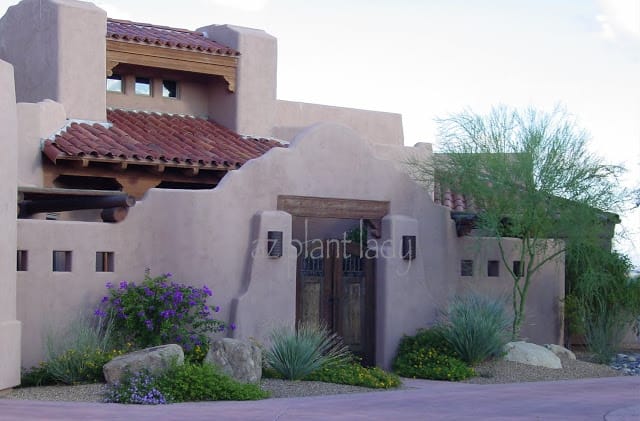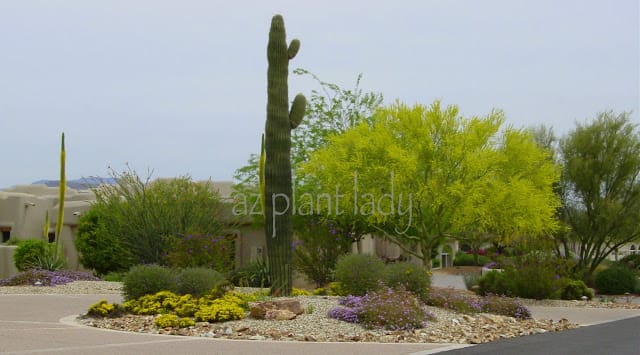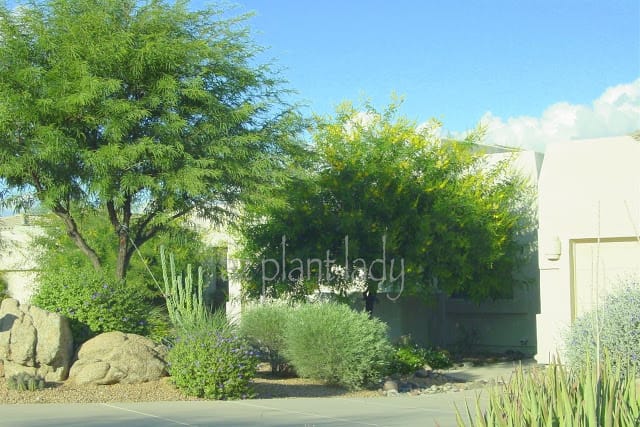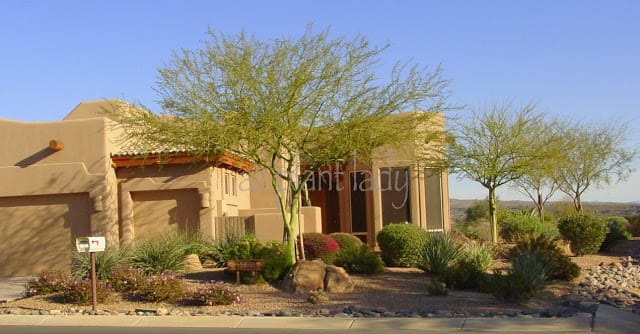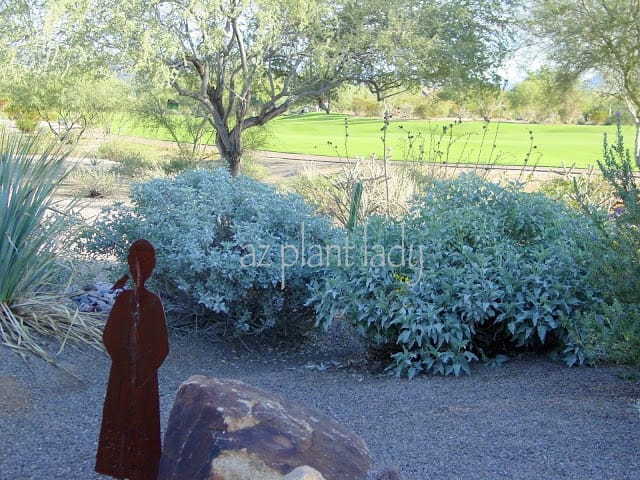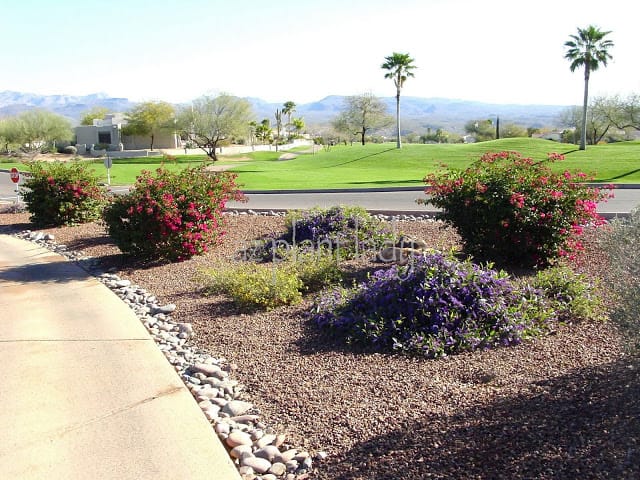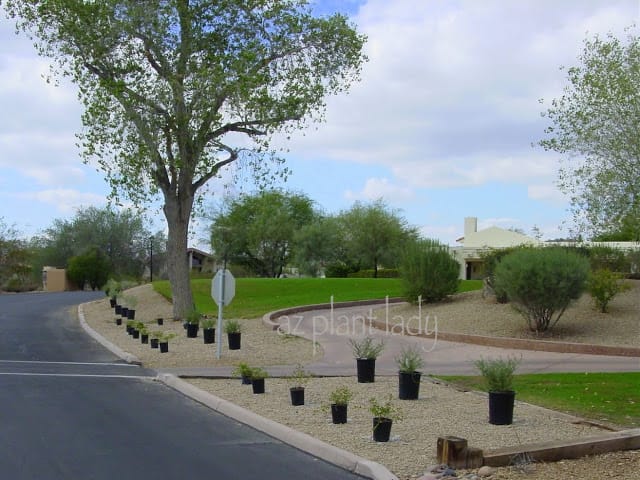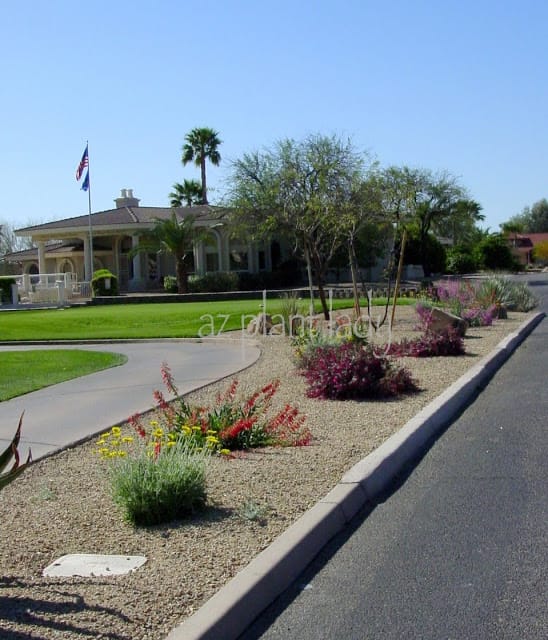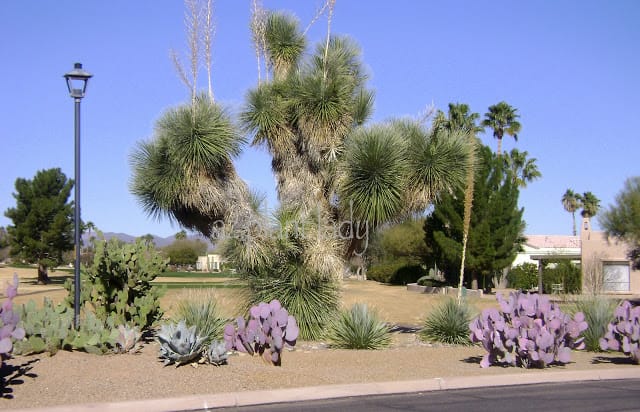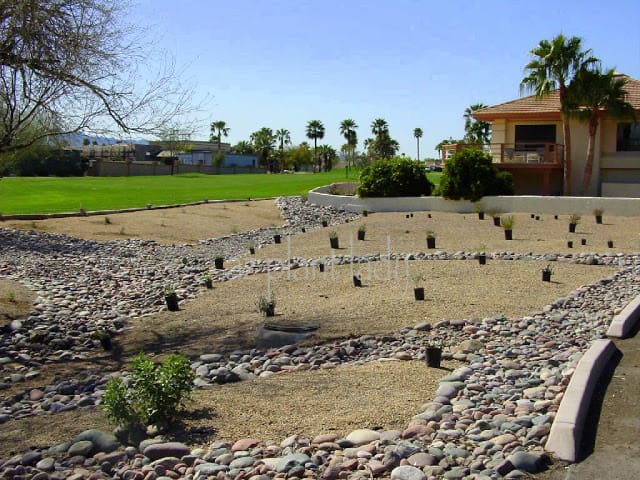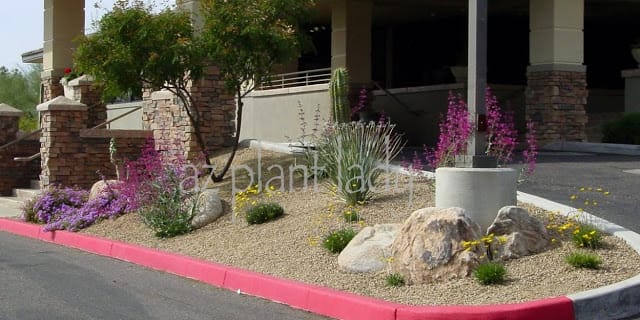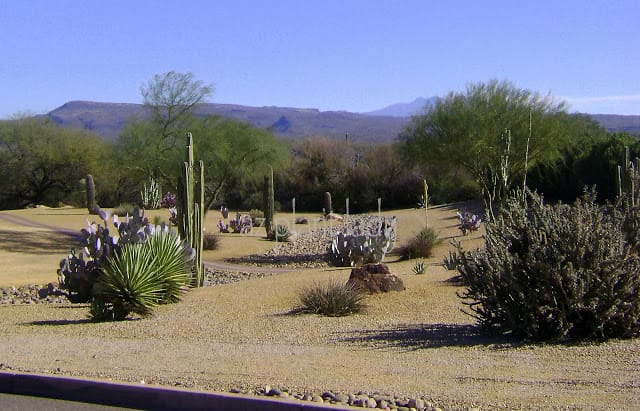Each time I go on a landscape consult, it is an adventure. I never know what to expect. Will there be serious problems with any of the trees and plants? Or will my help be needed to re-design the landscape, adjust the irrigation schedule or help people learn how to maintain their plants? Well, life is full of surprises.
Of course, every time I go on a consult, I always bring my camera. I am always looking for examples of beautiful plants and problems to photograph. I then share many of them with you.
Yesterday, was a gorgeous spring day. The high was 78 degrees and I actually had two consults scheduled, within two miles of each other. My first client had just bought a new home and wanted help identifying her plants and how to take care of them. She also had inherited some sick citrus trees and needed help in how to help them.
First the good things that I saw….
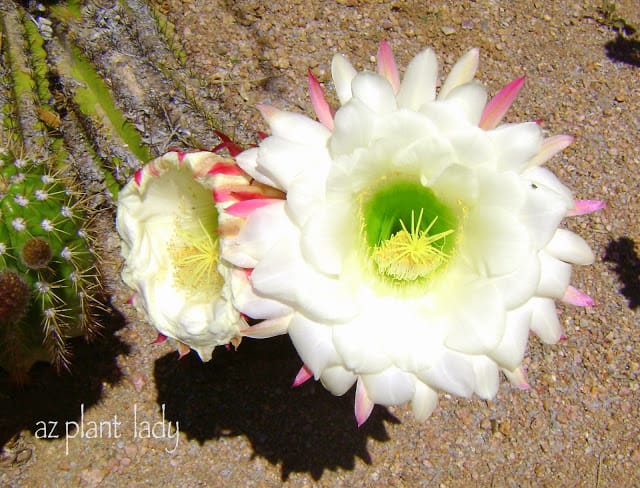
I was greeted by the front entry by this spectacular white flower. Argentine Giant (Trichocereus candicans), is a cactus that is highly desired. It produces flowers a few times during spring and summer months. This particular cactus was absolutely covered in these large blossoms.
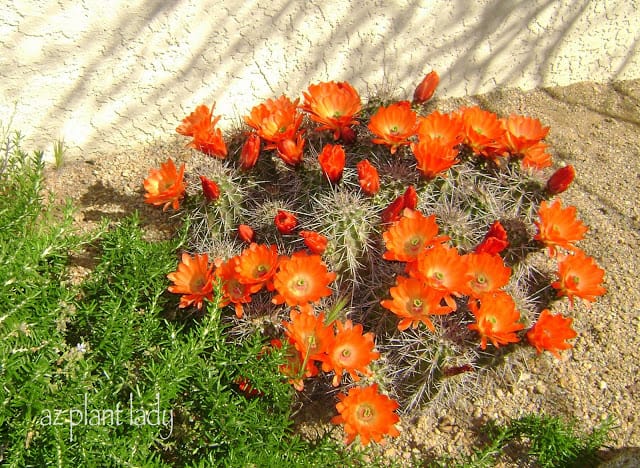
Nearby the Argentine Giant, was the smaller Claret Cup Cactus (Echinocereus triglochidiatus) awash in bright orange blooms.
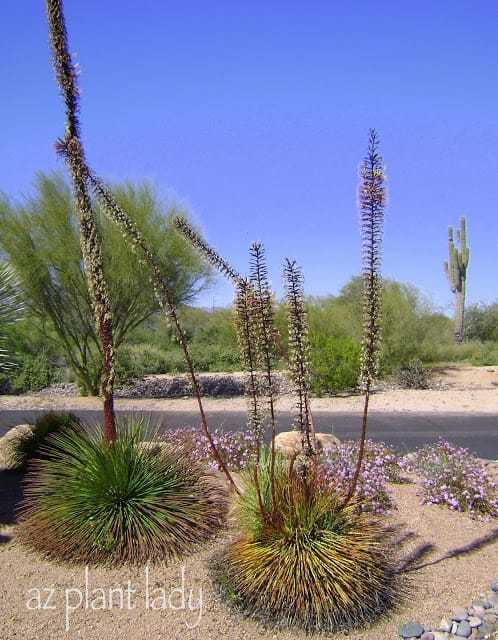
An unusually shaped flowering Twin Flower Agave (Agave geminiflora) caught my eye. Normally, they produce a single flowering stalk like the one on the left. However, the one on the right had seven smaller stalks. I love seeing examples of plants that are doing something out of the ordinary 🙂
Now for the bad….
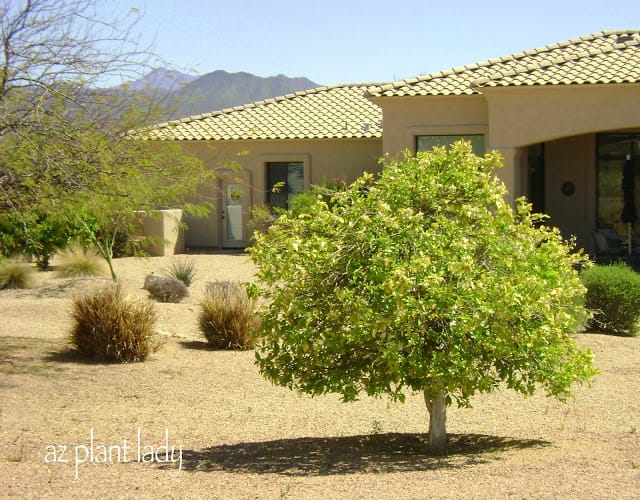
This is one of the four sickly citrus trees that I was asked to see. The diagnosis was relatively easy. Lack of water and nutrient deficiency. Both problems will be solved by enlarging the basin underneath the tree so that it extends out to where the branches end. As the tree grows, so must the basin since a trees roots extend outwards where the branches extend. A new watering schedule and making sure that the water penetrates to 3 ft. in depth should do much to help these trees.
Nutrient deficiencies are corrected by fertilizing citrus trees three times a year – in Feb/Mar, May and September, using either a synthetic or organic fertilizer specially formulated for citrus which contains not only nitrogen, but also micronutrients that are often deficient in our soils.
More information on citrus care, irrigation and fertilization can be found here.
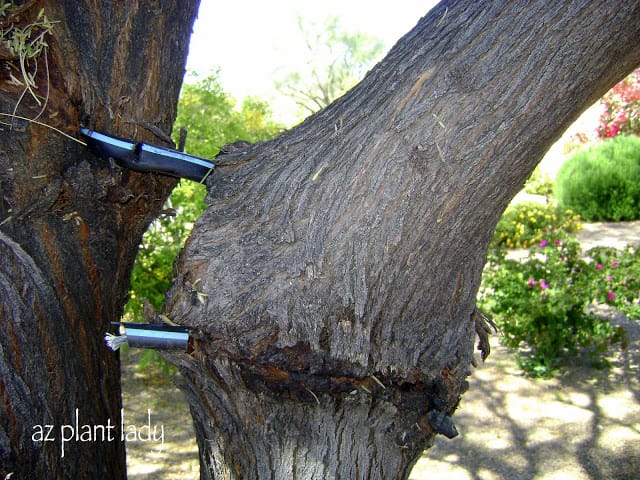
As I walked the landscape with the homeowner, we started looking at the trees that she had inherited with her new home. I quickly noticed something very bad. The previous homeowners had never removed the stake and cables from their tree when it was young.
The tree ended up growing around the wire and there is no way to remove it now without seriously damaging the tree. Usually, when wires are left on the tree, they gradually cut off the nutrients to the tree as the “veins” of the tree are located directly underneath the bark. This usually results in the death of the tree. However, this Mesquite tree appears to have survived and regrown it’s vascular (veins) system around the wire. The tree is 11 years old and is the exception in terms of surviving this type of treatment.
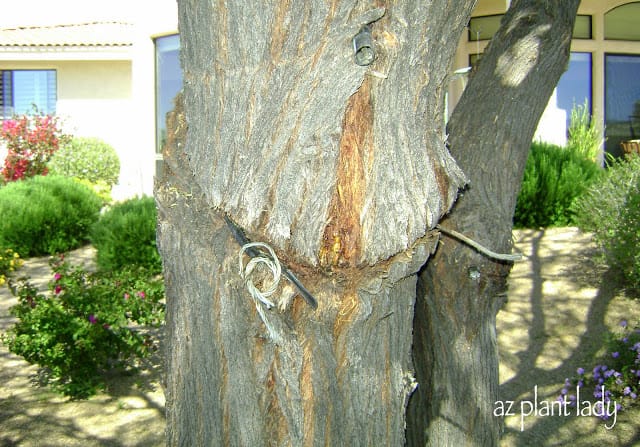
**If your trees are staked, PLEASE make sure to check your wires/cables to make sure that this does not happen to you. Trees are not to be staked forever, only the first 1 – 2 years after planting.
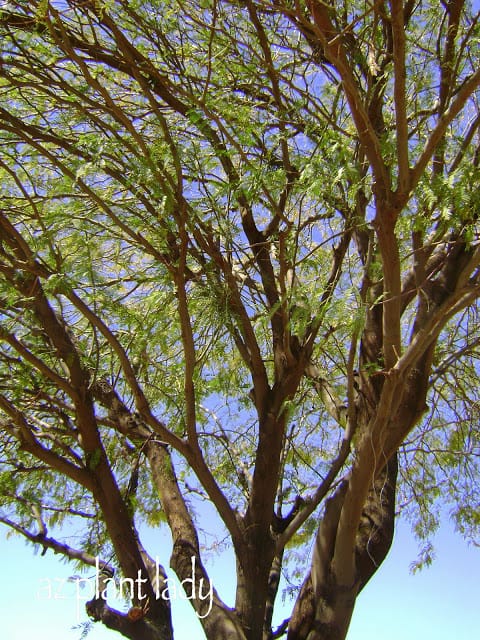
Now the next bad thing I observed was not immediately obvious, but as I began to focus my gaze upwards to evaluate the trees, I saw a few clumps of mistletoe (Phoradendron californicum) growing in the tree. Now, this is not the same kind of leafy mistletoe that is often seen at Christmas. But it is a parasite that will, over time, cause a decline in the tree and stress the tree. This makes the tree more susceptible to disease, insect infestations and other stresses.
As an arborist, I have taken part in discussions regarding whether or not you should leave mistletoe in trees. Mistletoe is part of the natural desert and can be seen growing in trees in the wild. Mistletoe itself will not kill a tree, but does stress the tree and leaves it vulnerable to disease, insects and environmental stresses that will kill the tree eventually.
In managed landscape areas I have always had mistletoe removed. In my opinion, trees do not need any additional stress and the trees are part of a larger landscape design and aesthetics are important.
I also recommend that homeowners also remove the mistletoe from their trees. Not only will it help their tree, but will help keep the mistletoe from spreading to their neighbor’s trees. Mistletoe is spread when birds eat the berries it produces and then they ‘poop’ them out on another tree’s branch and the seed germinates and starts to infect the branch it landed on.
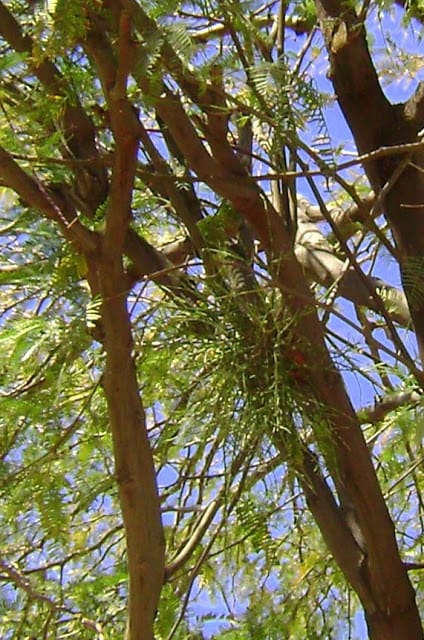
Small clumps of mistletoe are not always obvious, but once you know what to look for, you will easily be able to spot it. I recommend looking at your tree in the winter, when there are fewer leaves to hide the mistletoe.
There are two ways to remove mistletoe. To completely get rid of it, you need to cut the branch that it occurs on at least 12″ below where the mistletoe begins. In most cases, this will completely get rid of the mistletoe. This works best with smaller branches. However, if you have a very large branch that is infected, it may not be feasible to remove the branch. In this case, you can prune the mistletoe off – just take your gloved hand and brush them off of the branch. It is really that easy. Doing this will not get rid of the mistletoe, but help to control it. You will have to continue to do this periodically to keep the mistletoe from becoming larger and spreading.
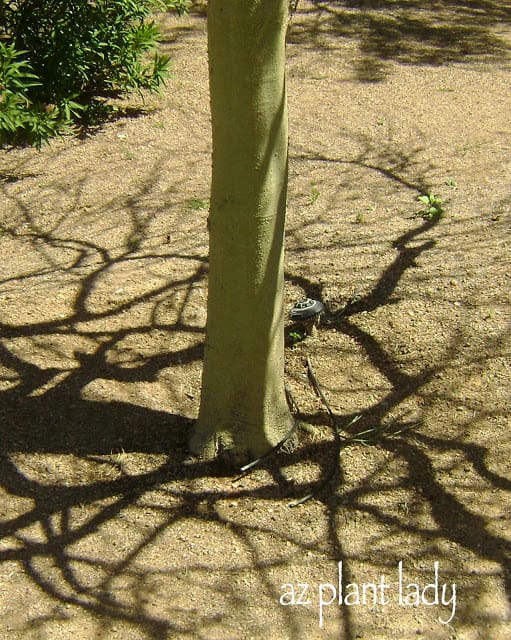
Now on to my second client of the day. Overall, is landscape was in good shape. His citrus trees were healthy as were the rest of his plants. But, the majority of his concerns were in regards to his irrigation system. His mature Palo Brea tree (Parkinsonia praecox), pictured above, still had the irrigation emitters positioned by the trunk of the tree. The same place that they had been place 8 years ago. The problem is, the roots have now moved.
I explained to him that as a tree grows, so do the roots. They grow outwards, toward the edge of where the branches extend. And so as the tree grows, the emitters need to be moved and places around the tree where the branches end. For this tree, three 2 (gph) emitters evenly spaced around the tree will work just fine.
Well, I had a very fulfilling day working with some very nice people. I just love help people learn how to care for their trees and plants and spend time outdoors and admiring the beauty in people’s gardens.
As I was leaving, I saw something very ugly….
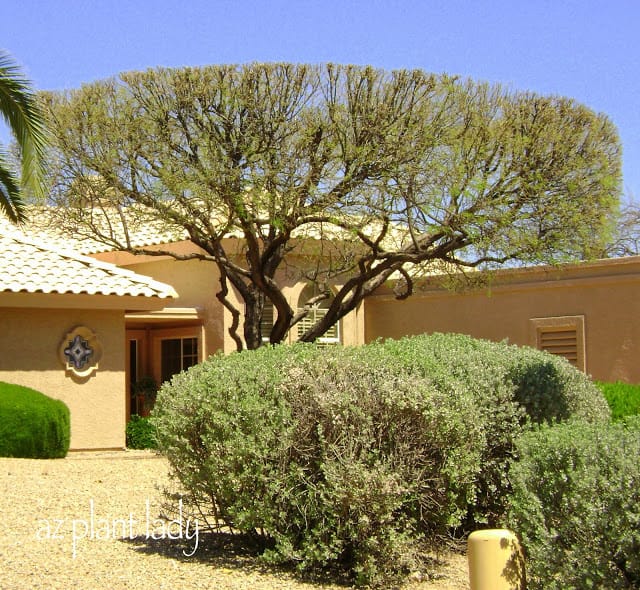
This homeowner had ‘topped’ his Mesquite tree. Now, I am not sure why they had this done. I could tell that from looking at the branches, that it was not the first time it had been ‘topped’.
Now any arborist will tell you that ‘topping’ is bad and there are a number of reasons why. I will address it further in another post, but will leave you with these few reasons NOT to top your trees:
-It causes the tree to grow more quickly to replace the leaves lost, therefore increasing the amount of pruning needed.
-The new branches will not be firmly attached and will be more likely to break.
-Topping stresses the tree, making it susceptible to disease, insects and environmental stresses.
-If those reasons are not enough, then maybe this one will be….IT IS UGLY.
*For more information on the damage ‘topping’ trees does, you can visit The International Society of Arboriculture.
Thank you for hanging in there with me…I realize this was a long post, but there was so much to ‘talk’ about from my visits yesterday. I hope you enjoyed the beauty of the flowers and that maybe I have helped people avoid some of the problems that I have highlighted.
“Scary” Pruning Practices and the Unfortunate Results



